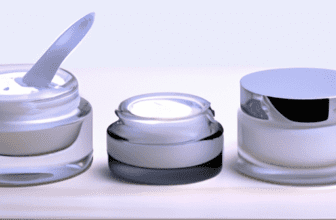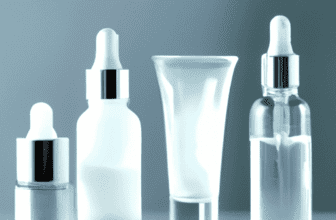Retinol 視黃醇 Shì huáng chún: The Golden Ingredient for Ageless Skin
.jpg)
Key Takeaway:
- Retinol is a form of Vitamin A, an essential nutrient for vision, immunity, and skin health. It is found in animal-based foods like liver, egg yolk, and milk, and can also be converted in the body from beta-carotene found in plant-based foods like carrots and spinach.
- Retinol plays a crucial role in binding to protein molecules, allowing it to be transported throughout the body and utilized by cells. It is also involved in the regulation of gene expression and immune function.
- Studies have shown that retinol can help improve various skin conditions, including acne, wrinkles, and hyperpigmentation. However, excessive intake of retinol can lead to toxicity and negative side effects, highlighting the importance of moderation and consultation with a healthcare professional.
Introduction to Retinol
Retinol, also known as Vitamin A, plays an essential role in maintaining healthy skin, vision and overall bodily function. In this section, we will explore the various forms and functions of Vitamin A, as well as its natural sources. Additionally, we will discuss the process of converting beta-carotene into Vitamin A and the importance of this conversion.
Forms and Functions of Vitamin A
Vitamin A exists in several forms, like retinol, retinal, and retinoic acid. It’s part of many body processes, such as vision, reproduction, growth, and immunity. Retinol is the most important form. It transports the nutrient through the bloodstream.
Retinol helps rods sensitive to low-light conditions, by bonding with opsin to make rhodopsin. It also helps healthy skin and bones. Plus, it interacts with DNA sequences, and regulates gene expression.
Retinol is a must for embryonic development and reproductive health. Without enough vitamin A, you can get blindness, keratinization, and infections.
Eat foods like carrots, and use products rich in vitamin A, to get the benefits. There’s no judgement – just a healthy glow!
Natural Sources of Vitamin A
Natural sources of Vitamin A are essential for healthy vision, growth, development, and immune system support. These sources provide different types of retinoids that the body can convert into usable Vitamin A.
Egg yolks give small amounts of Vitamin A that the body easily absorbs. Liver is an amazing source of preformed Vitamin A (retinol) that the body absorbs quickly. Dairy products like milk, cheese, and butter are also a good source of Vitamin A.
Fruits and vegetables like apricots, cantaloupes, carrots, and sweet potatoes are rich in beta-carotene, which can be converted into Vitamin A. These natural sources not just provide vital nutrients, but also keep skin and mucous membranes healthy. They also contain lutein and zeaxanthin, which protect eye health.
It’s important to remember that too much Vitamin A from supplements or animal sources can be toxic. To be safe, it’s best to consume these natural sources in moderation and ask a healthcare professional before taking any supplements.
From carrots to eyesight, beta-carotene’s journey will show the advantages of Vitamin A!
Conversion of Beta-Carotene to Vitamin A
Beta-carotene is a key precursor of Vitamin A. It can be converted to Vitamin A in the body, and plays a major role in human health. Vitamin A has multiple essential functions. These include vision, immune system, growth and development. The conversion to Vitamin A mainly happens in the small intestine. Factors like genetics, diet and health affect this.
The conversion process changes Beta-Carotene into Retinal. This can then be changed to active Vitamin A forms like Retinol. But not all Beta-Carotene is converted to Vitamin A. Some are lost, or not metabolized, because of various factors.
Research shows that adding fat to meals with Beta-Carotene can increase the conversion rate. Certain people may also have genetic changes that make it hard to convert Beta-Carotene.
Vitamin A is very important for human health. So, it’s important to consume sources of Beta-Carotene, like fruits and vegetables. People with health problems or dietary issues may need to take supplements with preformed Vitamin A, such as Retinyl Palmitate.
Importance of Vitamin A
Vitamin A is necessary! It is important for vision, skin, and immunity. Our bodies can make Vitamin A from plants, but animal products like liver, milk, and eggs provide a better source.
Being a fat-soluble vitamin, Vitamin A is stored in the liver. It helps with cell growth and gene expression, and it promotes healthy immunity. Retinol, the active form of Vitamin A, is key for night vision and prevention of age-related macular degeneration. During pregnancy, it is especially important and supports fetal growth.
Deficiencies in Vitamin A can be bad. In places with malnutrition, it can cause blindness and increase risk of infection. To prevent this, people need easy access to Vitamin A foods and supplements. Eating Vitamin A daily is necessary for good health.
Role of Retinol-Binding Proteins
Retinol-binding proteins (RBP) are essential for the efficient transport of vitamin A, or retinol. RBP4 and CRBP are two types of proteins that help move retinol from the liver to other tissues.
RBP also act as cellular regulators. For example, RBP4 is involved in glucose and lipid metabolism, as well as insulin resistance. Whereas, CRBP helps with retinoic acid metabolism and signaling pathways.
Studies have found that RBP can be linked to health conditions like diabetes, obesity, and heart disease. Higher levels of RBP4 have been seen to increase the risk of insulin resistance and type 2 diabetes.
To keep retinol levels healthy, it is advised to get vitamin A from food or supplements. Exercising and eating healthy can also help support proper retinol metabolism and transport.
Photolysis and Bioavailability of Retinol
Photolysis and bioavailability of retinol are key to getting the most out of vitamin A. Retinol is vital for vision, immune function, and cell communication. Light, temperature, oxygen, pH, and antioxidants can all affect retinol’s photolysis and bioavailability.
Light can cause retinol to break down, reducing its bioavailability. Temperature and oxygen can also have a negative impact. However, antioxidants can protect retinol from degradation and improve its bioavailability.
Light’s effects on retinol vary depending on duration, wavelength, and intensity. Knowing these factors can help to maximize the effectiveness of retinol in the body.
Retinol’s Role in Ligand Binding and Release
Retinol, a form of vitamin A, is vital in ligand binding and release. This involves the binding of retinol to specific proteins which then releases its ligand. This mechanism is crucial for vision perception, gene expression and cellular differentiation. Retinol’s role in these processes is key to keeping proper physiological function on a cellular and organismal level.
The table below shows the significant roles of retinol in ligand binding and release in different processes:
| Process | Role of Retinol |
|---|---|
| Vision Perception | Light absorption in retina |
| Gene Expression | Transcription regulation |
| Cellular Differentiation | Regulation of cell growth and differentiation |
Remarkably, retinol may even have a role in cancer therapy. Studies suggest that retinol can cause differentiation in cancer cells, leading to the restriction of tumor growth and metastasis. This displays the varied roles of retinol in maintaining appropriate cellular function and its potential therapeutic uses.
Pro Tip: It’s necessary to have adequate retinol intake to maintain optimal physiological function in humans. Sources of retinol include liver, eggs and dairy products. However, too much can lead to toxicity and adverse health effects. Stick to recommended dietary guidelines and get advice from a healthcare professional before taking any retinol-based supplements.
Retinol as a Physiological Indicator for Imaging
Retinol is a must-have for the imaging industry. It’s an essential physiological indicator which aids imaging processes. It has a range of unique properties, adding value to the industry.
Retinol’s value as a physiological indicator for imaging can be seen in a tabular representation. It reduces fluorescence levels in fluorescence imaging and interference in confocal imaging. Plus, Retinol catalyzes photobleaching, making critical structures easier to image.
It’s also a valuable factor in pharmacokinetic studies. It helps to get accurate information on drug-binding and distribution mechanisms.
Include Retinol for improved imaging processes. Don’t miss out on its many benefits!
Somatic Inactivation of Retinoblastoma Gene
Somatic inactivation of the Retinoblastoma gene is when a gene mutates and becomes inactive in body cells. This causes retinoblastoma, a rare tumor of the retina mainly found in children.
A table can show different mutations that lead to somatic inactivation. Missense mutations can affect protein structure. Frameshift mutations may introduce a premature stop codon. Mutations in the promoter region may affect gene expression. Deletions of the whole gene may lead to complete inactivation. This inactivation can also happen without any mutations; it’s called loss of heterozygosity.
Studies show Vitamin A (Retinol) may regulate the Retinoblastoma gene. It can stop growth of the tumor cells and trigger apoptosis.
Five Facts About Retinol 中文:
- ✅ Retinol is an animal form of vitamin A. (Source: Wikipedia)
- ✅ Retinol is involved in the visual cycle. (Source: Wikipedia)
- ✅ There are different forms of vitamin A, including retinol, retinal, and retinoic acid. (Source: Wikipedia)
- ✅ Beta-carotene can be converted into vitamin A in the body. (Source: Wikipedia)
- ✅ Retinol-binding protein assessment is used to determine visceral protein mass in nutritional studies. (Source: Cambridge Dictionary)
FAQs about Retinol 中文
What is retinol?
Retinol is a form of vitamin A that is important for vision as well as skin, teeth, and bone health. It can be obtained naturally from fish liver oil or synthesized through various routes.
What are the different forms of vitamin A?
There are different forms of vitamin A, including retinol, retinal, and retinoic acid. Retinol and retinal are involved in the visual cycle, while retinoic acid is involved in epithelial tissue differentiation.
How is retinol generated in intact cells?
Retinol is generated in intact cells through photolysis, which requires special analysis.
What is the role of lipocalins in relation to retinol?
Lipocalins, including retinol-binding protein and retinoic acid-binding protein, have a b-barrel structure and release retinol upon activation, serving as a transport form in plasma. Retinol-binding protein assessment is used to determine visceral protein mass in nutritional studies.
What are the subsequent stages of retinol photolysis?
Subsequent stages of retinol photolysis lead to the release of retinoids, which serve as signaling molecules in various physiological processes in the body.
How is retinol used in nutritional studies?
Retinol-binding protein assessment is used to determine visceral protein mass in nutritional studies.





